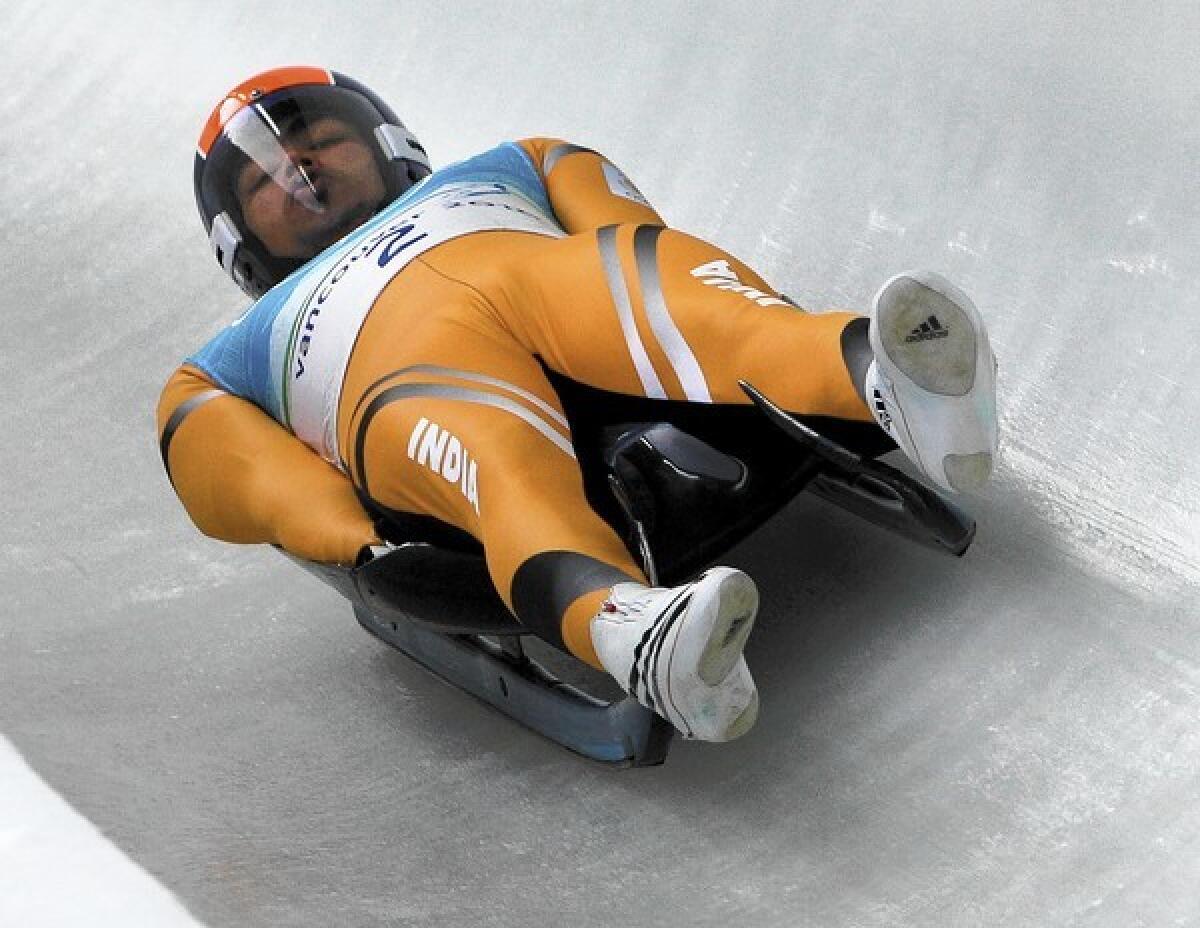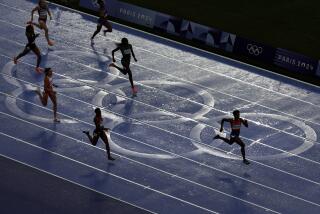India doesn’t carry a torch for the Olympic Games

- Share via
MUMBAI, India — As a boy, Shiva Keshavan raced a crude wooden sled down the snowy mountain roads ringing the Himalayas in his native northern India. Keshavan, 32, is now one of Asia’s top luge competitors, even though India doesn’t have an ice track, and he has represented his country at the last four Winter Olympics.
But not this year.
In a dispute over corruption-tainted Indian athletic officials, the International Olympic Committee suspended India’s membership, which means it cannot participate in the Games in Sochi, Russia, which begin Friday. Keshavan and two Indian skiers who have qualified for the Games will compete as “independent athletes” — not under their own flag but under the generic white Olympic banner — an arrangement the IOC has made for athletes from newly formed or war-torn lands, such as East Timor and South Sudan.
If that seems like an embarrassment for the world’s second-most populous country, it is just the latest for India on the Olympic stage. Despite its size and passion for sports — especially cricket, in which it is the defending world champion — India has performed poorly at the Games, collecting just 26 medals in 31 Olympics, fewer than North Korea or Estonia.
Indian athletes say their Olympic troubles are emblematic of a national sports system that, like much of Indian public life, is riven by corruption, nepotism and mismanagement. Despite a surge of economic growth that has transformed the nation over two decades, current and former Olympians say they still lack the coaching, training facilities and resources needed to succeed at the highest competitive level.
“Sports ultimately is just an expression of a country,” Keshavan said by phone late last month from La Plagne, a hamlet in the French Alps where he has been training. “And right now, the fact that our country is not represented because of corruption, it says a lot about the state of our country.”
The dispute with the IOC dates to 2012, when the Indian Olympic Assn., the nongovernmental body that oversees participation in the Games, elected several controversial figures, including Lalit Bhanot, who had spent 10 months in jail on corruption charges related to his handling of the 2010 Commonwealth Games in New Delhi.
That competition, a sort of mini-Olympics for countries of the former British Empire, was intended to be a showcase for India, but instead saw construction breakdowns, contracting irregularities and massive cost overruns. Bhanot was charged in connection with the award of an illegal contract to a Swiss company that installed timers for the games at vastly inflated rates, costing the Indian government millions of dollars. Nonetheless, he was allowed to run unopposed for the Olympic post.
Another top Indian Olympic Assn. official, Abhay Singh Chautala, had been charged in an education scam unrelated to sports.
After the IOC suspended India in December 2012, the Indian association agreed to remove the tainted officials and, a year later, amended its rules to bar anyone facing criminal charges from seeking election. But in apparent defiance of the IOC, the group scheduled an election for new officials Sunday, two days after the Sochi Games begin.
The IOC said it would not allow India to participate before its Olympic body’s election. In a statement to The Times, the IOC said that it welcomed the reforms but they did not come in time for Sochi and that “no Indian flags or symbols would be used at the Games.”
In an interview, Tarlochan Singh, vice president of the Indian Olympic Assn., expressed little regret.
“We have done everything they wanted. We have taken out those persons they have objected to,” Singh said. “The IOC should have allowed India [to participate in Sochi] knowing we are on our way to a good start. So it’s not our fault.”
India’s long-serving sporting officials — including Singh, who is 80 — have been reluctant to give up their posts. In a country where patronage networks are crucial, a spot on the national Olympic body confers prestige, access to politicians and some control over jobs and government funds.
The top ranks of India’s sports federations include almost no former athletes and are instead filled with politicians or their relatives, who sometimes hold multiple positions across various sports, observers say.
“It only speaks volumes of their intentions … that they cling to these jobs,” said Ashwini Nachappa, a former sprinter who competed for India at the 1988 Olympics in Seoul, who now serves as vice president of Clean Sports India, a nonprofit that works to eliminate corruption in athletics.
“Sports is a great vehicle to be seen by politicians. But what is the work that they have done? Athletes still train in terrible conditions.”
Even Keshavan, a two-time gold medalist in the Asia Cup luge competition, complains of receiving no support from India’s Olympic body despite being the country’s most durable Winter Olympian. In a hair-raising promotional video posted on the Olympics’ YouTube channel, Keshavan is shown racing a wheeled sled down a treacherous Himalayan highway evading moving cars and herds of goats.
His story is India’s answer to the Jamaican bobsled team. Keshavan has never been able to afford a full-time coach and designs his sleds in a garage with assistance from friends. He helps finance his training and equipment with income from the family business: a tourism company in the scenic hill town of Manali, including an Italian restaurant called the Rose Garden that was inspired by his Italian-born mother.
“When I get back home, I still have to worry about working and making enough money — obviously to survive first but then to spend on luge. It’s really a passion for me,” Keshavan said. “My family, my wife, we’ve all really put everything behind this.”
An international scout discovered Keshavan in the mid-1990s. In 1998, at 16, he qualified for the Olympics in Nagano, Japan. He was India’s sole representative and the youngest to compete in the luge.
That year, he rode on a sled he borrowed from the South Korean team. In 2006 in Turin, Italy, when he posted his best Olympic finish of 25th, the International Luge Federation pitched in funds. In 2010, a group of Indian lawyers pooled money to buy the sled he used at the Games in Vancouver.
Last month, the Indian government, which has also been critical of the national Olympic association, said it would give Keshavan more than $50,000 to hire a coach and pay his way to Sochi.
But Keshavan says the government must do more to nurture sporting talent in the years between Olympics.
“We do have a lot of talent in India, and we have kids who are eager to prove themselves,” he said. “All that’s lacking is to give the means for the talent to flourish.”
More to Read
Sign up for Essential California
The most important California stories and recommendations in your inbox every morning.
You may occasionally receive promotional content from the Los Angeles Times.










